
The Enchanting Gothenburg Archipelago
Discover Sweden's coastal gem: The Gothenburg Archipelago, where pristine nature, charming villages, and rich history converge in a stunning maritime setting.
The Gothenburg Archipelago, located just off the coast of Sweden's second-largest city, is a haven for nature lovers and adventure seekers alike. This stunning collection of over 20 islands offers visitors an escape into serene landscapes, where rugged cliffs meet sandy beaches, and charming fishing villages dot the shorelines. Explore the islands by hopping on one of the many ferries that connect them. Each island has its own unique charm, from the bustling Styrsö with its historical sites and quaint cafes, to the tranquil Vrångö, which is perfect for hiking and bird watching. The archipelago is also a paradise for water activities such as kayaking, sailing, and fishing. History enthusiasts will enjoy the rich cultural heritage of the islands, with their ancient stone carvings and traditional Swedish architecture. The local cuisine is a treat, with fresh seafood being a highlight. Don’t miss trying the local fish dishes at one of the waterfront restaurants while enjoying the sunset over the North Sea.
Local tips in Gothenburg Archipelago
- Check the ferry schedules in advance as they can vary, especially in off-peak seasons.
- Wear comfortable walking shoes; many islands are best explored on foot.
- Bring a picnic; some islands have limited dining options, but offer beautiful spots for a meal.
- Visit during the summer for the best weather and extended daylight hours.
- Don’t forget your camera; the archipelago offers countless photo opportunities.
The Enchanting Gothenburg Archipelago
The Gothenburg Archipelago, located just off the coast of Sweden's second-largest city, is a haven for nature lovers and adventure seekers alike. This stunning collection of over 20 islands offers visitors an escape into serene landscapes, where rugged cliffs meet sandy beaches, and charming fishing villages dot the shorelines. Explore the islands by hopping on one of the many ferries that connect them. Each island has its own unique charm, from the bustling Styrsö with its historical sites and quaint cafes, to the tranquil Vrångö, which is perfect for hiking and bird watching. The archipelago is also a paradise for water activities such as kayaking, sailing, and fishing. History enthusiasts will enjoy the rich cultural heritage of the islands, with their ancient stone carvings and traditional Swedish architecture. The local cuisine is a treat, with fresh seafood being a highlight. Don’t miss trying the local fish dishes at one of the waterfront restaurants while enjoying the sunset over the North Sea.
When is the best time to go to Gothenburg Archipelago?
Iconic landmarks you can’t miss
Paddan Sightseeing
Discover the beauty of Gothenburg from the water with the Paddan Sightseeing Tour, an unforgettable boat journey through the city’s canals and history.

Oceanbus
Discover Gothenburg like never before with Oceanbus—an unforgettable amphibious tour experience showcasing the city's beauty.

Saltholmen
Discover the serene beauty of Saltholmen, a picturesque peninsula in Västra Frölunda, where stunning coastal views and maritime adventures await.

Gothenburg Visitor Centre
Explore Gothenburg with ease at the Visitor Centre, your essential hub for local insights, maps, and unique souvenirs in Sweden's second-largest city.

Styrsö
Discover the serene beauty of Styrsö, an idyllic island near Gothenburg, perfect for relaxation and outdoor adventures.
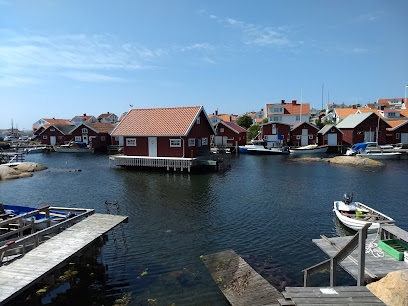
Ångaren BOHUSLÄN
Experience the breathtaking beauty of Gothenburg's archipelago with Ångaren Bohuslän's unforgettable boat tours, perfect for all adventurers.

Stora Amundön
Experience the tranquility of Stora Amundön Island, a scenic retreat in Hovås, Sweden, perfect for nature lovers and outdoor enthusiasts.

Bike Tour Gothenburg
Experience Gothenburg's charm on two wheels with Bike Tour Gothenburg, offering guided cycling adventures through the city's stunning sights.
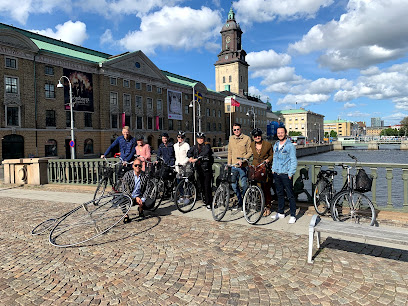
Vinga
Explore Vinga Island, a hidden gem in Sweden's Bohuslän archipelago, where stunning landscapes and maritime history await every traveler.
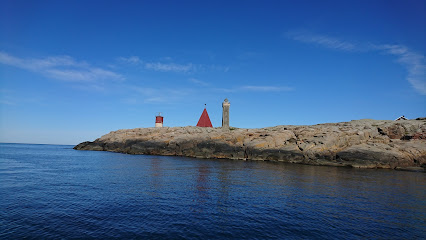
Galterö
Experience the serene beauty of Galterö Island in Sweden, a perfect destination for nature lovers and adventure seekers alike.

Knarrholmen
Experience the tranquil charm of Knarrholmen Island in Västra Frölunda, Sweden, where stunning nature meets peaceful relaxation.

Brännö
Explore Brännö Island, a tranquil Swedish archipelago retreat rich in natural beauty, maritime culture, and charming landscapes perfect for every traveler.

Donsö
Experience the tranquil charm of Donsö Island, a hidden gem in Sweden's archipelago, where nature, culture, and tranquility meet.

Lilla Amundo
Explore the serene beauty of Lilla Amundo, a tranquil island in Hovås, Sweden, perfect for nature lovers and peaceful getaways.

Lilla Varholmen
Explore the tranquil beauty of Lilla Varholmen, an enchanting island in Torslanda, Sweden, perfect for nature lovers and serene getaways.

Unmissable attractions to see
Liseberg
Experience the magic of Liseberg in Gothenburg, a thrilling amusement park filled with rides, gardens, and entertainment for everyone.

Slottsskogen
Experience the serene beauty of Slottsskogen, Gothenburg's urban park filled with lush landscapes, wildlife, and cultural events.

Universeum
Explore Universeum in Gothenburg – a captivating science center, aquarium, and animal park that ignites curiosity and inspires learning.

Helix
Discover the adrenaline of Helix at Liseberg, Gothenburg's top roller coaster, offering breathtaking views and thrilling rides for all ages.

Gothenburg City Museum
Discover the captivating history and culture of Gothenburg at the City Museum, featuring Viking exhibitions and contemporary art displays.

Aeroseum
Discover the thrill of aviation at Aeroseum, Gothenburg's premier attraction showcasing an incredible collection of aircraft and interactive exhibits.

Maritiman
Experience Gothenburg's rich maritime history at Maritiman, a unique museum featuring historic ships and engaging exhibitions for all ages.

Balder
Discover the thrill of Balder, Gothenburg's iconic wooden roller coaster, offering breathtaking views and exhilarating rides at Liseberg amusement park.

Maritime Museum & Aquarium
Discover Sweden's maritime heritage and vibrant marine life at the Maritime Museum & Aquarium, a captivating family-friendly attraction in Gothenburg.

The Children's Zoo
Discover the joy of wildlife at The Children's Zoo in Gothenburg, where kids can interact with animals and learn about nature in a beautiful setting.

Älvsborgsbron
Discover the breathtaking views and architectural beauty of Älvsborgsbron, Gothenburg's iconic bridge connecting the mainland to Hisingen.

Röhsska museet
Discover the captivating world of design at Röhsska Museet in Gothenburg—where history, craftsmanship, and contemporary creativity converge.

Götheborg of Sweden
Discover Sweden's maritime history at Götheborg, an enchanting museum featuring an 18th-century replica ship and engaging exhibitions.
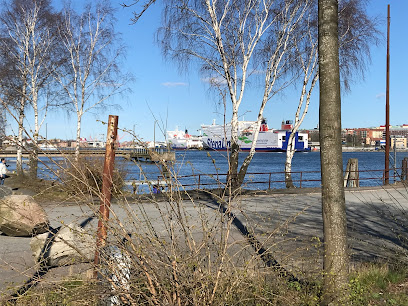
Röda Sten Konsthall
Explore contemporary art and cultural events at Röda Sten Konsthall, a unique art center in Gothenburg, Sweden, by the beautiful waterfront.

Änggård Mountains
Discover the beauty of Änggård Mountains, a nature preserve perfect for hiking, picnicking, and wildlife watching in Mölndal.
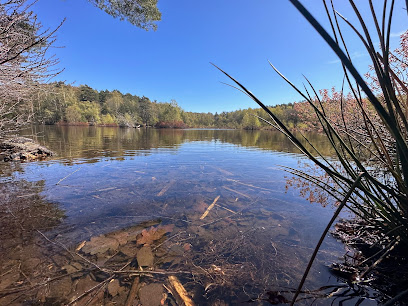
Essential places to dine
Heaven 23
Discover Heaven 23 in Gothenburg: where fine dining meets breathtaking city views for an unforgettable culinary journey.
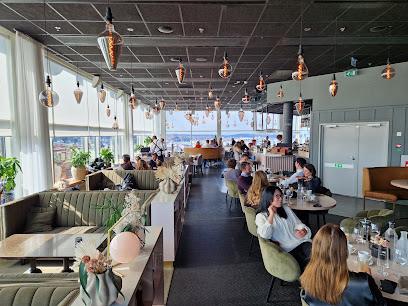
2112
Experience gourmet burgers and local brews at 2112 in Gothenburg - where every bite is a celebration of flavor.

Långedrag Värdshus
Discover exquisite seafood dining at Långedrag Värdshus, where fresh catches meet stunning seaside views in Västra Frölunda.

Sjömagasinet Sverige
Experience the finest seafood dining in Gothenburg at Sjömagasinet, where tradition meets culinary excellence by the sea.

Familjen
Experience authentic Swedish cuisine at Familjen in Gothenburg - where tradition meets modern flavors in a cozy setting.

Röda Sten Restaurang
Experience exquisite Swedish cuisine and stunning waterfront views at Röda Sten Restaurang in Gothenburg.

Bord 27
Experience authentic Swedish cuisine at Bord 27 in Gothenburg - where tradition meets modern dining in a cozy setting.

Fiskekrogen
Experience the finest seafood dining at Fiskekrogen in Gothenburg - where freshness meets tradition in every exquisite dish.

Jungman Jansson
Discover culinary excellence at Jungman Jansson in Västra Frölunda – where delicious flavors meet stunning waterfront views.

Feskarbrittas kro
Experience authentic Swedish seafood at Feskarbrittas Kro in Gothenburg, where fresh flavors meet stunning waterfront views.
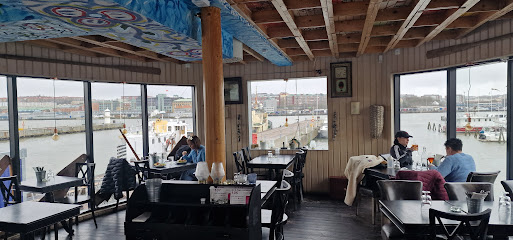
Dinner 22
Experience the best of Swedish cuisine at Dinner 22 in Gothenburg – where fresh ingredients meet exceptional taste.
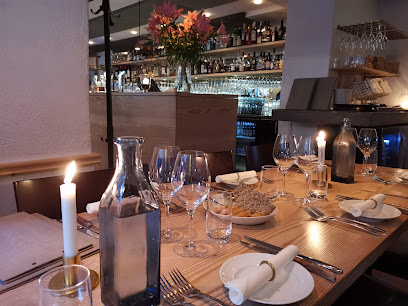
Restaurang Piga
Discover authentic Swedish cuisine at Restaurang Piga in Gothenburg – where tradition meets flavor in every bite.

View Skybar & Restaurant
Discover breathtaking views and exquisite modern European cuisine at Gothenburg's premier skybar and restaurant experience.

Cuckoo's Nest
Experience modern European cuisine at Cuckoo's Nest in Gothenburg—where stunning views meet exceptional flavors.
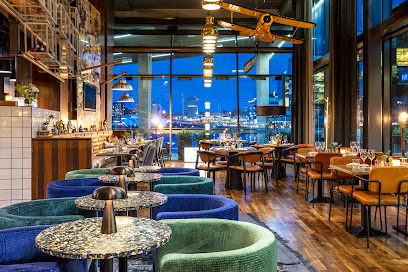
Blackbird
Discover Blackbird: Gothenburg's premier vegan restaurant offering creative dishes and sustainable dining experiences.

Markets, malls and hidden boutiques
Swedish Souvenir Haga
Explore the charm of Swedish craftsmanship at Swedish Souvenir Haga in Gothenburg, where unique souvenirs await every visitor.

Haga of gothenburg
Experience the historic charm and vibrant culture of Haga in Gothenburg, a must-visit destination for authentic Swedish souvenirs and cozy cafés.

Flying Tiger Copenhagen
Explore the colorful and quirky world of Flying Tiger Copenhagen – where creativity meets affordability in Gothenburg.
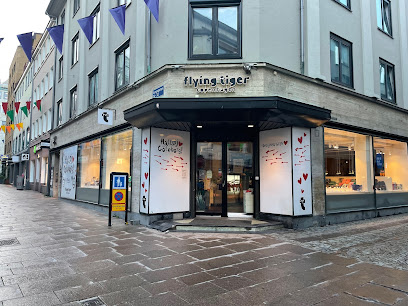
SOUVENIR GOTHENBURG
Explore Souvenir Gothenburg for unique Swedish gifts, local treats, and a taste of authentic culture in the heart of Gothenburg.

Kawaii.se (Gothenburg)
Explore Kawaii.se in Gothenburg for charming gift baskets and unique souvenirs that celebrate Swedish culture with every delightful find.

Artilleriet
Explore Artilleriet in Gothenburg for exquisite home goods and furniture that combines modern design with sustainability and creativity.

Antikhallarna
Discover the charm of Antikhallarna in Gothenburg, a unique antique mall filled with vintage treasures and delightful finds for every collector.

The British Shop
Explore The British Shop in Gothenburg for a unique selection of British groceries, snacks, and gifts, bringing a taste of England to Sweden.

Brännö Handel
Discover the charm of Brännö Handel, a delightful general store on Brännö Island, offering local goods and a taste of island life.
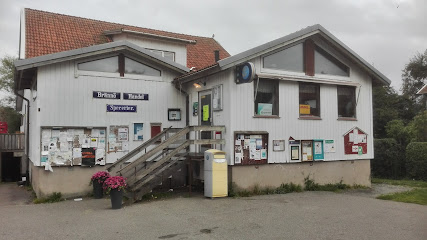
Pop Boutique
Explore Pop Boutique in Gothenburg for a unique blend of vintage styles and contemporary fashion, reflecting the city's vibrant culture.

The Store on Asperö
Experience the delightful offerings of The Store on Asperö, where local flavors and community spirit come together in a charming grocery store.

Grothica
Explore Grothica, Gothenburg's stylish clothing store offering unique apparel and accessories in a vibrant shopping atmosphere.

Moder Svea
Explore the charm of Sweden at Moder Svea, Gothenburg's premier souvenir store, offering unique crafts and local delicacies.

The flagship
Explore The Flagship in Gothenburg for unique Swedish gifts, home goods, and an extensive collection of flags embodying Scandinavian design.

Hamnaffären Donsö
Explore the heart of Donsö at Hamnaffären, where local charm meets essential hardware supplies in a picturesque island setting.
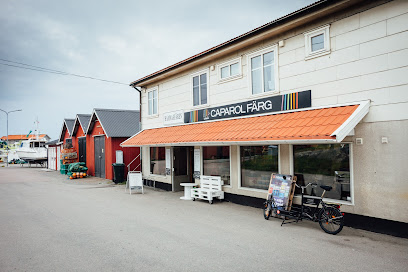
Essential bars & hidden hideouts
Steampunk Bar
Experience a unique blend of vintage decor and innovative cocktails at Gothenburg's Steampunk Bar, a must-visit for cocktail enthusiasts.

Port Arthur
Experience the vibrant flavors and cozy ambiance of Port Arthur, a top pub and restaurant in Gothenburg, perfect for locals and tourists alike.

Henriksberg
Experience the vibrant nightlife of Gothenburg at Henriksberg, where delicious burgers and a lively atmosphere create unforgettable memories.
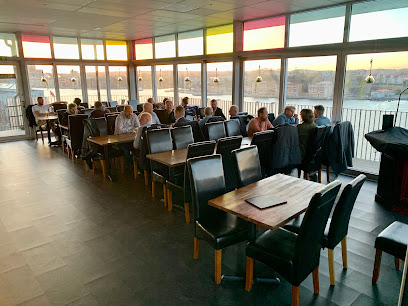
Brewers Beer Bar Magasinsgatan.
Discover the vibrant atmosphere of Brewers Beer Bar Magasinsgatan, where craft beer meets delectable kebabs and pizzas in Gothenburg.

The Flying Barrel Pub
Experience the vibrant atmosphere and delicious local flavors at The Flying Barrel Pub in Gothenburg, your go-to spot for craft beer and hearty meals.

Le Pub
Experience the charm of Le Pub in Gothenburg, where delicious bistro dishes and a lively pub atmosphere await every visitor.

Kellys Bar & Matsal
Discover the vibrant spirit of Gothenburg at Kellys Bar & Matsal, where great drinks, friendly faces, and unforgettable memories await.

The Abyss
Discover Gothenburg's vibrant music scene and delicious dining at The Abyss, a lively bar blending great food and captivating performances.
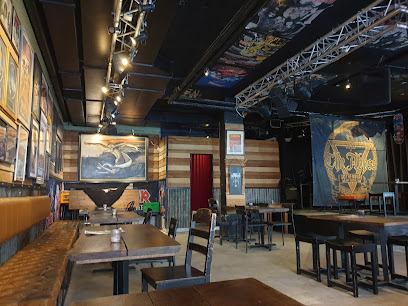
Stranger
Discover Gothenburg's vibrant nightlife at Stranger, a lively bar offering expertly crafted drinks and a welcoming atmosphere for all.
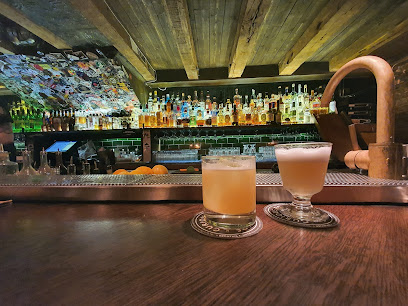
3 Små Rum
Discover the unique charm of 3 Små Rum, an intimate bar in Gothenburg known for its cozy atmosphere and exceptional drink selection.
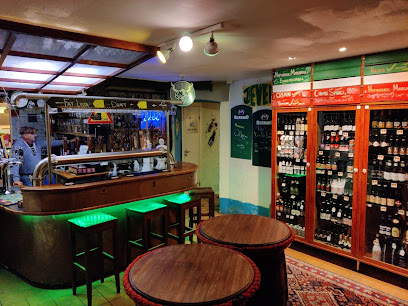
Sejdeln Pub HB
Discover the lively atmosphere of Sejdeln Pub in Gothenburg, where affordable drinks and a friendly vibe await every visitor.

Skål Pub
Discover the lively charm of Skål Pub in Gothenburg, where great drinks and a vibrant atmosphere await all visitors.

Down under bar
Discover the lively Down Under Bar in Gothenburg, where Australian flavors and vibrant atmosphere meet for an unforgettable dining experience.

Street Life
Discover Gothenburg's nightlife at Street Life, a vibrant bar offering affordable drinks and a welcoming atmosphere perfect for socializing.

Drinks 20
Experience the vibrant atmosphere and exquisite cocktails at Drinks 20, a must-visit bar in Gothenburg for a memorable night out.
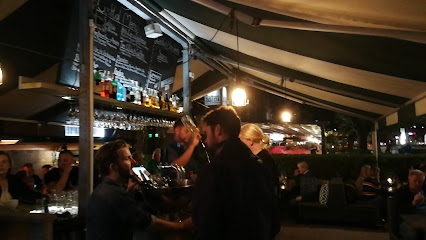
Local Phrases about Gothenburg Archipelago
-
- HelloHej
[hey] - GoodbyeAdjö
[ad-yo] - YesJa
[yah] - NoNej
[nay] - Please/You're welcomeVarsågod
[var-saw-good] - Thank youTack
[tahck] - Excuse me/SorryUrsäkta mig/Förlåt
[oor-sak-ta me/fur-lot] - How are you?Hur mår du?
[hoor mor doo] - Fine. And you?Bra. Och du?
[bra. ock doo] - Do you speak English?Pratar du engelska?
[pra-tar doo eng-els-ka] - I don't understandJag förstår inte
[yag fur-stor in-te]
- HelloHej
-
- I'd like to see the menu, pleaseJag skulle vilja se menyn, tack
[yag shool-la vil-ya say meny, tahck] - I don't eat meatJag äter inte kött
[yag a-ter in-te shoot] - Cheers!Skål!
[skawl] - I would like to pay, pleaseJag skulle vilja betala, tack
[yag shool-la vil-ya be-ta-la, tahck]
- I'd like to see the menu, pleaseJag skulle vilja se menyn, tack
-
- Help!Hjälp!
[yelp] - Go away!Gå iväg!
[go ee-vayg] - Call the Police!Ring polisen!
[ring po-lee-sen] - Call a doctor!Ring en läkare!
[ring en ler-ka-re] - I'm lostJag är vilse
[yag air vill-se] - I'm illJag är sjuk
[yag air shoook]
- Help!Hjälp!
-
- I'd like to buy...Jag skulle vilja köpa...
[yag shool-la vil-ya choppa] - I'm just lookingJag tittar bara
[yag tee-tar ba-ra] - How much is it?Vad kostar det?
[vad koss-tar deht] - That's too expensiveDet är för dyrt
[deht air fur deert] - Can you lower the price?Kan du sänka priset?
[kan doo sang-ka prees-et]
- I'd like to buy...Jag skulle vilja köpa...
-
- What time is it?Vad är klockan?
[vad air klok-an] - It's one o'clockKlockan är ett
[klok-an air ayt] - Half past (10)Halv tio
[halv tee-o] - MorningMorgon
[mor-gon] - AfternoonEftermiddag
[ef-ter-mee-dag] - EveningKväll
[kvel] - YesterdayIgår
[ee-gor] - TodayIdag
[ee-dag] - TomorrowImorgon
[ee-mor-gon] - 1Ett
[ayt] - 2Två
[tvo] - 3Tre
[treh] - 4Fyra
[fy-rah] - 5Fem
[fem] - 6Sex
[seks] - 7Sju
[shoo] - 8Åtta
[ot-ta] - 9Nio
[nee-o] - 10Tio
[tee-o]
- What time is it?Vad är klockan?
-
- Where's a/the...?Var finns en/the...?
[var fins ayn/the] - What's the address?Vad är adressen?
[vad air a-driss-en] - Can you show me (on the map)?Kan du visa mig (på kartan)?
[kan doo vee-sa mey (po kart-an)] - When's the next (bus)?När går nästa (buss)?
[nayr gor nes-ta (boos)] - A ticket (to ....)En biljett (till ....)
[en beel-yet (teel)]
- Where's a/the...?Var finns en/the...?
History of Gothenburg Archipelago
-
The Gothenburg Archipelago was inhabited during the Viking Age, around the 9th to 11th centuries. Evidence of these early settlers can be found in the form of ancient runestones and burial mounds scattered across the islands. The strategic location of the archipelago made it a vital area for maritime navigation and trade routes during this period.
-
By the medieval period, the archipelago had developed into a series of thriving fishing villages. The residents relied heavily on herring fishing, which became the backbone of their economy. Remnants of these early fishing communities can still be seen today, with traditional wooden houses and fishing huts preserved in villages like Vrångö and Styrsö.
-
During the 17th and 18th centuries, the Gothenburg Archipelago played a crucial role in Sweden's military defense strategy. The islands' strategic location along the Kattegat sea route made them essential for protecting the western coast of Sweden. Fortifications and military structures, such as the Carlsten Fortress on Marstrand Island, were established to defend against potential naval threats.
-
In the 18th century, the archipelago experienced a significant economic boost during the herring boom. The abundant herring stocks attracted fishermen from across Europe, leading to a population increase and the establishment of new industries, including fish processing and export businesses. This period of prosperity left an indelible mark on the cultural and economic landscape of the islands.
-
Maritime traditions have been a cornerstone of life in the Gothenburg Archipelago for centuries. Traditional boatbuilding techniques and seafaring skills were passed down through generations. Today, these traditions are celebrated through various festivals, such as the annual Styrsö Boat Day, where locals showcase their historical vessels and maritime heritage.
-
In the late 19th and early 20th centuries, the Gothenburg Archipelago began to attract tourists seeking natural beauty and tranquility. The advent of steamships and improved transportation made the islands more accessible, leading to the development of guesthouses and resorts. This shift marked the beginning of the archipelago's transformation into a popular tourist destination.
-
In recent decades, there has been a strong focus on preserving the natural environment and unique biodiversity of the Gothenburg Archipelago. Conservation efforts have been implemented to protect the delicate ecosystems of the islands, including marine reserves and protected areas. These initiatives aim to balance tourism with sustainable practices, ensuring the archipelago remains a pristine destination for future generations.
Gothenburg Archipelago Essentials
-
The Gothenburg Archipelago is accessible from Gothenburg city. The nearest international airport is Gothenburg Landvetter Airport (GOT), approximately 25 kilometers from the city center. From the airport, you can take a bus, taxi, or shuttle service to Gothenburg. Once in Gothenburg, several ferries operate from Saltholmen ferry terminal to various islands in the archipelago. Public transportation, including trams and buses, can take you to the Saltholmen terminal from different parts of the city.
-
Within the Gothenburg Archipelago, transportation is primarily by ferry, bicycle, or foot. The ferries are operated by Västtrafik and connect most of the inhabited islands. Bicycles can be rented on some islands, providing a convenient way to explore. Cars are generally not allowed on the southern islands, enhancing the tranquil atmosphere. On the northern islands where cars are allowed, renting a car or using local taxis is an option. Some islands also have local buses.
-
The official currency in Sweden is the Swedish Krona (SEK). Credit and debit cards are widely accepted throughout the Gothenburg Archipelago, including in restaurants, shops, and for transportation. However, it is advisable to carry some cash for small purchases or in places where card payments might not be available. ATMs are available on some of the larger islands, but it is recommended to withdraw cash while in Gothenburg city.
-
The Gothenburg Archipelago is generally a safe destination for tourists. Crime rates are low, but it's always wise to take standard precautions. Keep an eye on your belongings, especially in crowded areas and on public transportation. There are no specific high-crime areas targeting tourists in the archipelago. Always follow local regulations and guidelines to ensure a safe and enjoyable visit.
-
In case of emergency, dial 112 for immediate assistance. This number connects you to police, fire, and medical services. Some islands have local medical clinics, while more serious medical emergencies may require transportation to Gothenburg. It is advisable to have travel insurance that covers medical emergencies. Pharmacies are available in Gothenburg and on some of the larger islands for minor health issues.
-
Fashion: Do dress in layers and bring a waterproof jacket, as the weather can be unpredictable. Don't wear high heels or impractical shoes, as many paths are uneven. Religion: Do respect the local customs and any religious practices you may encounter. Public Transport: Do be punctual for ferry departures and respect the queue. Don't eat or drink on public transport. Greetings: Do greet locals with a friendly 'Hej' (Hi) or 'God dag' (Good day). Eating & Drinking: Do try local seafood and traditional dishes. Don't leave a large tip, as service charges are usually included.
-
To experience the Gothenburg Archipelago like a local, visit during the off-peak seasons of late spring or early autumn. Engage with the locals, who are often friendly and willing to share stories about their islands. Explore the less touristy islands to find hidden gems and enjoy quieter beaches. Participate in local events and festivals to immerse yourself in the island culture. Don’t miss out on trying the fresh seafood, especially the shrimp and herring, which are local specialties.
Nearby Cities to Gothenburg Archipelago
-
Things To Do in Skagen
-
Things To Do in Frederikshavn
-
Things To Do in Aalborg
-
Things To Do in Jönköping
-
Things To Do in Randers
-
Things To Do in Fredrikstad
-
Things To Do in Helsingør
-
Things To Do in Aarhus
-
Things To Do in Hillerød
-
Things To Do in Viborg
-
Things To Do in Silkeborg
-
Things To Do in Karlstad
-
Things To Do in Kalundborg
-
Things To Do in Roskilde
-
Things To Do in Copenhagen













